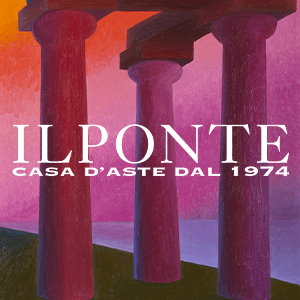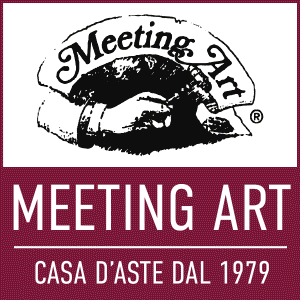Francis Bacon and the Existential Condition in Contemporary Art
Nathalie Djurberg | Adrian Ghenie | Arcangelo Sassolino | Chiharu Shiota | Annegret Soltau
5 October 2012 to 27 January 2013
Francis Bacon and the Existential Condition in Contemporary Art, an exhibition co-curated by Franziska Nori (Director of the CCCS) and Barbara Dawson (Director of the Dublin City Gallery The Hugh Lane), will be presenting work by contemporary artists who examine today’s existential state of societal mind. Their work explores the kind of questions man asks himself in his relationship with his own interior being, his body and the outside world. At the core of the exhibition are paintings by Francis Bacon (1909-1992), whose work is placed in dialogue with that of five contemporary artists of international renown: Nathalie Djurberg, Adrian Ghenie, Arcangelo Sassolino, Chiharu Shiota and Annegret Soltau. These artists share Bacon’s reflection on man’s existential condition and on the depiction of the human figure.
Alongside major works from international collections, the exhibition will also be showing, for the first time in Italy, four unfinished works by Bacon which he kept in his workshop for many years and which have been on display in the DCG The Hugh Lane since 2005. They include what is thought to be the artist’s last work, discovered on an easel in Reece Mews in London while he was on his deathbed in Madrid.
The main character in Bacon’s works is the human figure, often distorted and incapable of finding complete definition in the space offered by the painting. Bacon’s paintings on display, selected by Barbara Dawson, are set against a selection of photographic and archival material from the artist’s studio: photographic portraits, reproductions of old masters, film stills, and pictures from books and magazines. This material, which Bacon used as a working tool when creating his art, is presented in the exhibition thanks to this collaboration between the CCCS and the Dublin City Gallery The Hugh Lane, which acquired an authentic and perfectly preserved reconstruction of the artist’s last London workshop in 1998. Inside his studio, Bacon collected this material in an almost compulsive fashion, using it again and again. The resulting wear and tear has left traces that became “scars”, which play a crucial role in understanding the artist’s creative process.
Bacon’s mingling of the figurative and the abstract, bodies transfigured, his reference to autobiographical elements, his use of a variety of different iconographic sources and of tension and isolation as metaphors of man’s life can also be found in the work of the five contemporary artists that Franziska Nori has installed in such a way that they dialogue with Bacon resulting in an existential reflection on contemporary living.
Nathalie Djurberg (Sweden, 1978) works with clay and plasticine to create the symbolic and disturbing environments and figures which populate her installations and her video animation. Thanks to the cooperation of the Fondazione Prada, the CCCS will present three installations particularly representative of her approach, in which often crude and violent content is expressed through grotesque and, at times, fairylike images in a style that is seemingly naive and playful. Her figures’ bodies are matter in transition subject to processes of decomposition and distortion, emphasised by the use of such a malleable and versatile material as plasticine. Djurberg raises existential doubts and asks existential questions shifting between life and death, fear and desire, moving between unsettling taboos and such complex facets of the human condition as vulnerability, solitude, sexuality and death. The international institutions that have hosted exhibitions of her work include the Venice Biennale, Tate in London and the PS1/MoMA in New York.
Adrian Ghenie (Romania, 1977) creates paintings in which he merges personal images or images that are emblematic of recent history by dipping into such varied sources as catalogues, history books, film stills and pictures discovered on the internet. Represented here by a selection of his most recent works, Ghenie explores the depiction of the human figure, which he almost assaults especially around the face – the symbol of a person’s individuality, with a style of painting that corrupts and destroys his subject to the point of making it almost unrecognisable. A strong sense of realism coexists alongside drips and rivulets of paint, and evocative patches of colour in a fusion of the figurative and the abstract. Ghenie’s work has been shown in such prestigious venues as Tate Liverpool, Palazzo Grassi in Venice, the S.M.A.K. (Stedejilk Museum voor Actuele Kunst) in Ghent and the Denver Museum of Contemporary Art.
Arcangelo Sassolino (Italy, 1967) creates installations in which mechanical systems explore the effects caused by extreme forces. Sassolino’s works shows us both the shaping and the transience of things in their essentiality, deliberately rejecting all explicit recourse to metaphor. Sassolino displays rather than hides the individual component parts of his works in which processes are constantly ongoing, even if they can only be perceived when the matter bears concrete traces of their effects. They are a latter-daymemento mori warning, depicting man’s inability to go beyond the expectation of an event, or vice-versa, beyond its end. His work has been shown in such international museums and galleries as the Palais de Tokyo in Paris, the Macro in Rome and the CCCS in Florence.
In her installations, Chiharu Shiota (Japan, 1972) seems to translate emotional states and existential reflections onto a three-dimensional plane, addressing such issues as memory and dreams, autobiographical elements and traces of a past that take on an evocative, collective physical form. The new site-specific installation that she has created for the CCCS will be built with her characteristic use of an inextricable net of black threads which, in interacting with objects of everyday use, will impart a new density to the overall space where time will appear to stand still and to coagulate, creating an area in which to bring out hidden, forgotten or imagined connections. Shiota trained with Marina Abramovic and she has shown her work in such institutions as the Osaka National Museum of Art, the Warsaw Centre for Contemporary Art and the Sucrière in Lyons.
Annegret Soltau (Germany, 1946) works on the themes of the body and of identity through performances, video art and photography. Her section of the exhibition will consist of a selection of works both from several of her historic series from the 1970s and from her more recent output, thus allowing the visitor to explore her experimentation with photography through so-called photo sewings, in which the artist’s face or fragments of different faces are criss-crossed by thin black thread. The wounds, constrictions and fragmentation of her faces and bodies are transformed into a tool for reflection on the depiction and expression of the human existential condition. Soltau’s work has been shown in such international museums and galleries as the Museum Mathildenhöhe in Darmstadt and the MOCA in Los Angeles.
Francis Bacon and the Existential Condition in Contemporary Art is organised by the CCCS in conjunction with the Dublin City Gallery The Hugh Lane, Dublin and runs concurrently with The Thirties. The Arts in Italy Beyond Fascism at Palazzo Strozzi from 22 September 2012 until 27 January 2013.
With the support of: Comune di Firenze, Provincia di Firenze, Camera di Commercio di Firenze, Palazzo Strozzi Partners Association; Regione Toscana; Unicoop Firenze, Ataf.







3 Commenti
I’m gone to convey my little brother, that he should also visit this blog on regular basis to get updated from newest news.
Have you ever thought about creating an e-book or guest authoring
on other sites? I have a blog based upon on the
same ideas you discuss and would really like to have you share
some stories/information. I know my audience
would enjoy your work. If you’re even remotely interested, feel free to send me an email.
Good day! I just would like to offer you a huge thumbs up for your great information you
have got here on this post. I will be returning to your website
for more soon.